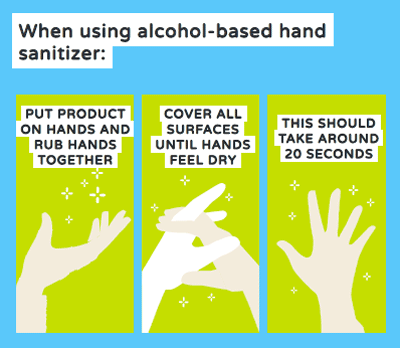In light of the COVID-19 pandemic, the importance of hand hygiene and infection control in hospitals once again became extremely evident. Due to poor hygiene practices in hospitals, 2 million patients suffer annually from healthcare-associated infections (HAIs) in the USA, and nearly 90,000 are estimated to die. The overall direct cost of HAIs to hospitals ranges from US $28B to $45B*. Over the last decade, as a result of growing adoption of touch devices throughout the care environments negatively impacted hygiene maintenance.

According to a recent study, mobile devices are used by approximately 90% of healthcare workers. Of this population, more than half use their phones 3-20 times daily. 50-65% of hospital staff admitted to using mobile devices during physical interactions with their patients. These devices are contaminated by one or multiple strains of bacteria at rates between 41.2-97.8%. Methicillin-resistant Staphylococcus aureus (MRSA), vancomycin-resistant enterococci (VRE), Clostridioides difficile (C.diff), Acinetobacter baumannii may hinder on device surfaces.
Moreover, hospitals have numerous tablets placed throughout the public areas and patient rooms, adding to the hygiene compliance challenges. A recent survey found that people touch their phones 2,617 times per day on average and that devices could host 10 times more bacteria than toilet seats.
Introduce cleaning best practices
Centers for Disease Control and Prevention (CDC) recommends healthcare organizations follow environmental cleaning best practices to prevent the further contamination of these infectious diseases. It is a multifaceted intervention that involves cleaning and disinfection of the environment alongside other key program elements that support successful implementation (e.g. leadership support, training, monitoring, and feedback mechanisms).
According to CDC’s 2019 report: "A colonized or infected patient can contaminate environmental surfaces and non-critical equipment. Microorganisms from these contaminated environmental surfaces and non-critical equipment can be transferred to a susceptible patient in two ways – the first way is if the susceptible patient makes contact with the contaminated surfaces directly (e.g., touches the contaminated surfaces); the second way is if a healthcare personnel, caretaker or visitors makes contact with the contaminated surfaces and then transfers the microorganisms to the susceptible patient. Contaminated hands or gloves of healthcare personnel, caretakers or visitors can also contaminate environmental surfaces this way. Proper hand washing and environmental cleaning can prevent transfer of microorganisms to healthcare personnel, caretakers, visitors and to susceptible patients".

For electronics such as cell phones, tablets, touch screens, remote controls, and keyboards, CDC recommends to:
- Follow the manufacturer's instructions for all cleaning and disinfection products.
- Consider the use of wipeable covers for electronics.
- If no manufacturer guidance is available, consider the use of alcohol-based wipes or sprays containing at least 70% alcohol to disinfect touch screens. Dry surfaces thoroughly to avoid the pooling of liquids.
Apple, a leading manufacturers of such electronic devices, recently updated its recommendations and guidelines for cleaning their products in the midst of the COVID-19 pandemic:
- Use only a soft, lint-free cloth. Avoid abrasive cloths, towels, paper towels, or similar items.
- Avoid excessive wiping, which might cause damage.
- Unplug all external power sources, devices, and cables.
- Keep liquids away from the product, unless otherwise noted for specific products.
- Don't get moisture into any openings.
- Don't use aerosol sprays, bleaches, or abrasives.
- Don't spray cleaners directly onto the item.
Improve hand hygiene compliance
According to the journal of the Society for Healthcare Epidemiology of America (SHEA), up to 55% of HAIs can be eliminated by implementing evidence-based infection prevention and control strategies. Most serious infections in healthcare are spread by human activities, therefore, hand hygiene is crucial in infection prevention. However, studies show that on average, healthcare workers clean their hands less than half of the time they should.

CDC introduced a Clean Hands Count campaign to improve hand hygiene and educate healthcare workers on the important precautionary measures.
- Healthcare providers might need to clean their hands as many as 100 times per 12-hour shift, depending on the number of patients and intensity of care.
- Everyone should know the facts of hand hygiene and alcohol-based hand sanitizers:
- Alcohol-based hand sanitizer kills most of the bad germs that make you sick and is the preferred way to clean your hands in healthcare settings.
- Alcohol-based hand sanitizer does not kill C. difficile, a common healthcare-associated infection that causes severe diarrhea. Patients with C. difficile should wash their hands with soap and water and make sure their healthcare providers always wear gloves when caring for them.
- Alcohol-based hand sanitizer is more effective and less drying than using soap and water and does not create antibiotic-resistant superbugs.
- Hand hygiene should be a topic of conversation between healthcare providers and patients. Healthcare providers can explain how and why they clean their hands before, after, and sometimes during patient care, and let patients know it's ok to ask about hand hygiene.
- Patients and their visitors can protect themselves by cleaning their own hands often.

Improving the accessibility of the hand sanitizer dispenser and the utilization of the sanitizers should also be incentivized. Some hospitals use smart hygiene solutions that measure staff’s hand hygiene compliance and provide real-time guidance and reminders to further promote the use of hand sanitizers.
Adopt touch-free technology
In order to have a better handle of infection control in healthcare environments hospitals need to consider solutions that limit the contact to eliminate the spread of infections. Aside from all the patient devices, sensors, and tags that are utilized to measure patients’ health and whereabouts also creates a huge infection risk when they are not maintained and cleaned properly between each patient visit.
Consider Ouva contact-free solutions
At Ouva, utilizing the power of machine learning and optical sensing, we provide a completely touch-free, voice-activated personalized assistance to guide patients, improve safety, hygiene and operational efficiency. Ouva offers facilities actionable insights on how they can best elevate the care experience. Check out our smart solutions at ouva.co.
* Stone PW. Economic burden of healthcare-associated infections: an American perspective